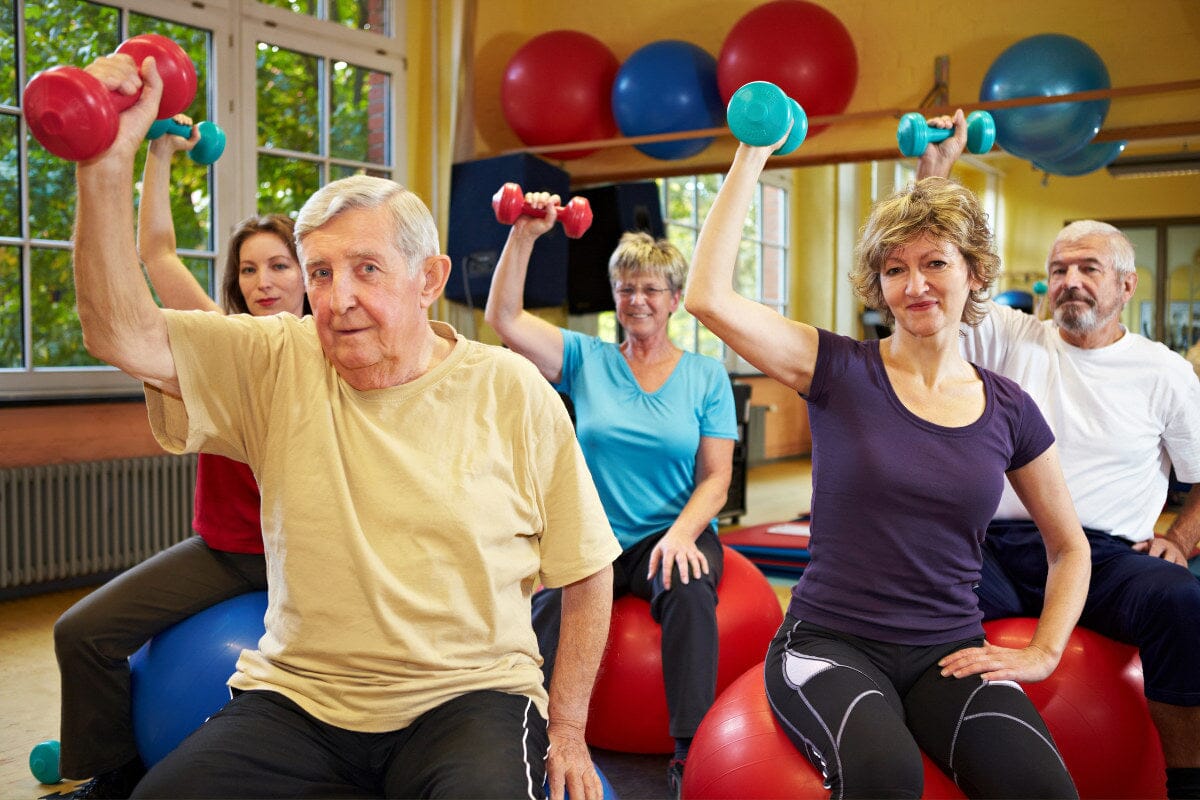Your Cart is Empty
FREE SHIPPING OVER $45 & RETURNLESS REFUNDS

As we age, maintaining our physical health becomes increasingly important. Regular exercise plays a vital role in preserving strength, balance, and overall well-being. Specifically, strength and stability exercises offer numerous benefits for individuals over the age of 40.
Maintaining muscle mass and strength: As we age, we naturally lose muscle mass and strength. Engaging in strength exercises helps to combat this process, promoting the preservation and growth of muscle fibers. Increased muscle strength contributes to improved mobility, enhanced joint stability, and better overall physical performance.
Enhancing bone density: Osteoporosis, a condition characterized by weakened bones, becomes more prevalent with age. Strength exercises that involve weight-bearing or resistance can stimulate bone growth and increase bone density. This reduces the risk of fractures and improves bone health, promoting long-term well-being.
Improving balance and reducing fall risks: Falling can have severe consequences for older individuals. By incorporating stability exercises into your routine, you can enhance proprioception (awareness of body positioning) and improve balance. This, in turn, reduces the risk of falls and related injuries, fostering a safer and more active lifestyle.
Supporting joint health: Regular movement and exercise are essential for joint health, as they help to lubricate the joints, enhance flexibility, and reduce stiffness. Strength exercises that target specific muscles around joints can provide stability and support, alleviating pain and improving overall joint function.
Boosting metabolism and managing weight: As we age, our metabolism tends to slow down, making weight management more challenging. Strength exercises promote the growth of lean muscle mass, which, in turn, increases metabolism and helps burn calories more effectively. Maintaining a healthy weight also reduces the risk of chronic conditions such as heart disease, diabetes, and high blood pressure.
Squats: Stand with your feet shoulder-width apart, lower yourself by bending your knees, and then return to a standing position. Squats engage the leg muscles, core, and glutes, improving lower body strength and stability.
Planks: Start in a push-up position, resting on your forearms instead of your hands. Maintain a straight line from head to toe, engaging your core muscles. Planks enhance core stability, helping to improve posture and support the spine.
Step-ups: Use a stable step or platform and step onto it with one foot. Push through the heel of the raised foot and lift your body up, then slowly lower yourself back down. Step-ups strengthen the leg muscles and enhance balance and stability.
Standing heel-to-toe walk: Place one foot in front of the other, touching the heel of the front foot to the toes of the back foot. Take small steps, maintaining this heel-to-toe alignment. This exercise challenges balance and proprioception, improving stability and coordination.
Dumbbell rows: Stand with a dumbbell in each hand, slightly bending your knees. Hinge forward at the hips while keeping your back straight, allowing the weights to hang in front of you. Pull the dumbbells up toward your chest, squeezing your shoulder blades together. Dumbbell rows strengthen the upper back, shoulders, and arms, improving posture and overall upper body strength.
Strength and stability exercises are crucial for individuals over the age of 40 to maintain physical well-being, independence, and high quality of life. By incorporating these exercises into your routine, you can preserve muscle mass, enhance balance, improve joint health, and manage weight effectively.
**Remember to consult with a healthcare professional before starting any new exercise program, especially if you have pre-existing health conditions.
Let me know what topics you're interested in, and I'll do my best to include them in future blogs! Email me at info@toneshealth.com